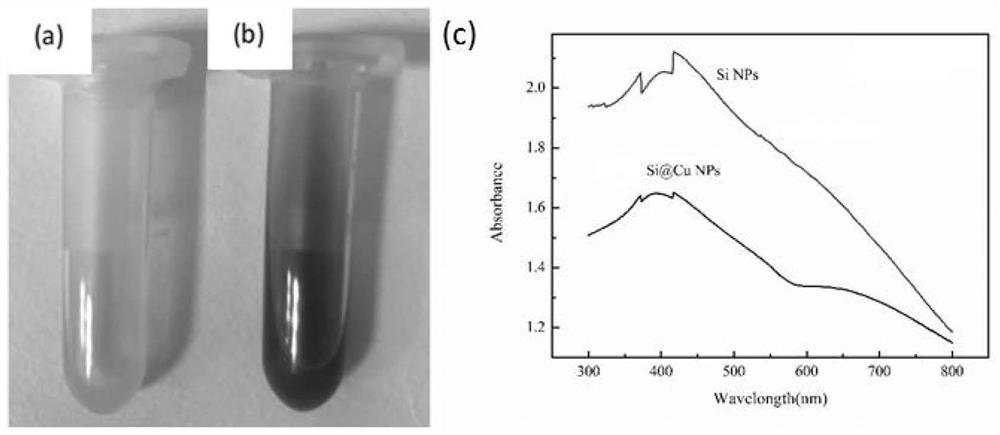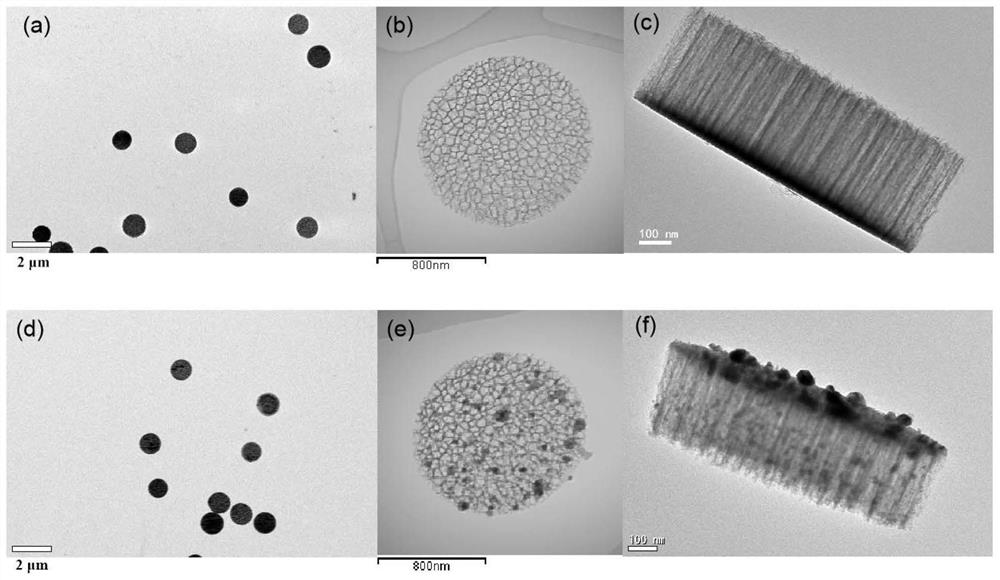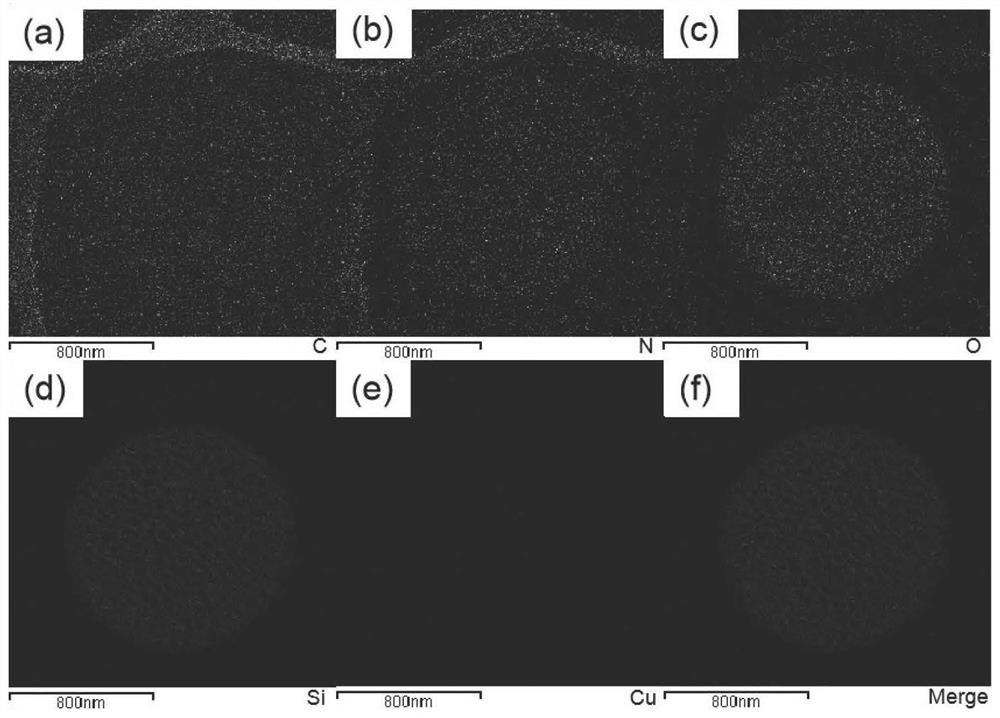A kind of porous silicon-supported copper nanoparticle and its preparation method and application
A nanoparticle, porous silicon technology, applied in nanotechnology, nanotechnology, chemical instruments and methods, etc., can solve the problems of pollution, high energy consumption, long cycle and so on
- Summary
- Abstract
- Description
- Claims
- Application Information
AI Technical Summary
Problems solved by technology
Method used
Image
Examples
preparation example Construction
[0037] The invention provides a preparation method of porous silicon-supported copper nanoparticles, comprising the following steps:
[0038] Carrying out the first centrifugation of the porous silicon nanoparticle isopropanol suspension to obtain the first precipitate;
[0039] After ultrasonically mixing the first precipitate with the HF solution, a second centrifugation is performed to obtain a second precipitate;
[0040] The second precipitation, polyvinylpyrrolidone solution, CuSO 4 The solution is mixed with the hydrazine hydrate solution, and a reduction reaction is performed to obtain the porous silicon-supported copper nanoparticles.
[0041] In the present invention, the porous silicon nanoparticle isopropanol suspension is subjected to the first centrifugation to obtain the first precipitate.
[0042] In the present invention, the concentration of the porous silicon nanoparticles in the isopropanol suspension of the porous silicon nanoparticles is preferably 0.6×...
Embodiment 1
[0067] The 0.6 × 1 billion / mL suspension of porous silicon nanoparticles in isopropanol (IPA) was placed in a 1 mL EP tube, centrifuged at 12,000 rpm for 1 min, the IPA supernatant was removed, and 1 mL of 0.05% volume fraction was added to it. The HF solution was sonicated for 5 min, centrifuged at 13000 rpm for 1 min, removed the supernatant, washed twice with water and twice with isopropanol, removed the residual HF solution, and added 1 mL of 10% PVP solution, 60 μL CuSO 4 (10 mmol / L) solution and 1 μL of hydrazine hydrate solution (80% by mass), mixed quickly, ultrasonically reacted for 20 min, centrifuged at 13,000 rpm for 1 min, removed the supernatant, washed with water three times, and washed with isopropanol three times. Residual PVP solution was removed to obtain light gray-black precipitates (Si@Cu NPs) which were kept in isopropanol solution.
[0068] (1) Characterization of Si@Cu NPs
[0069] like figure 1 where (a) is the physical image of the Si NPs suspensi...
PUM
| Property | Measurement | Unit |
|---|---|---|
| quality score | aaaaa | aaaaa |
Abstract
Description
Claims
Application Information
 Login to View More
Login to View More - R&D
- Intellectual Property
- Life Sciences
- Materials
- Tech Scout
- Unparalleled Data Quality
- Higher Quality Content
- 60% Fewer Hallucinations
Browse by: Latest US Patents, China's latest patents, Technical Efficacy Thesaurus, Application Domain, Technology Topic, Popular Technical Reports.
© 2025 PatSnap. All rights reserved.Legal|Privacy policy|Modern Slavery Act Transparency Statement|Sitemap|About US| Contact US: help@patsnap.com



